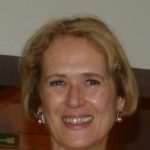Link to Pubmed [PMID] – 10573425
Nature 1999 Nov;402(6757):96-100
The endosymbiotic theory for the origin of eukaryotic cells proposes that genetic information can be transferred from mitochondria to the nucleus of a cell, and genes that are probably of mitochondrial origin have been found in nuclear chromosomes. Occasionally, short or rearranged sequences homologous to mitochondrial DNA are seen in the chromosomes of different organisms including yeast, plants and humans. Here we report a mechanism by which fragments of mitochondrial DNA, in single or tandem array, are transferred to yeast chromosomes under natural conditions during the repair of double-strand breaks in haploid mitotic cells. These repair insertions originate from noncontiguous regions of the mitochondrial genome. Our analysis of the Saccharomyces cerevisiae mitochondrial genome indicates that the yeast nuclear genome does indeed contain several short sequences of mitochondrial origin which are similar in size and composition to those that repair double-strand breaks. These sequences are located predominantly in non-coding regions of the chromosomes, frequently in the vicinity of retrotransposon long terminal repeats, and appear as recent integration events. Thus, colonization of the yeast genome by mitochondrial DNA is an ongoing process.

